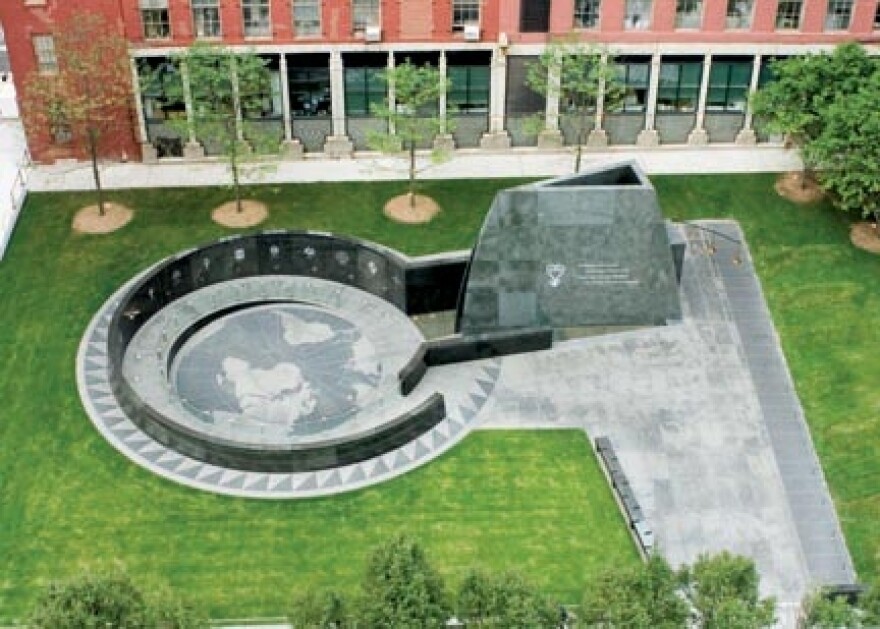During Black History Month, the Florida Public Archaeology Network is putting the spotlight on African American archaeology. FPAN’s Bria Brooks will be a part of three upcoming events over the next few days. The presentations will feature a general discussion of African American archaeology and provide an opportunity to highlight some of her own research.
Brooks is an underwater archaeologist. She was a graduate assistant at FPAN for about three years, before she was hired full-time last fall as public archaeologist for the Northwest Region based in Pensacola.
Support Local Stories. Donate Here.
During her time as a graduate, she got a chance to work at the site of the Clotilda, the last slave ship known to have arrived in the United States in 1860.
“It was 50 years after the actual ban of the importation of enslaved Africans in 1808," said Brooks. "The importation of these enslaved people into Mobile, Alabama was a crime, so the Clotilda was burned.”
She got to help document some of Clotilda’s artifacts, which were well-preserved in the muddy, silty bottom of the Mobile River.
“I think one of the most memorable things about collecting the planking from the ship was actually cutting into it,” Brooks recalled. “You could actually smell the fresh pine like it was yesterday.”

The experience also included a visit to the historic community of Africatown, which was founded by some of the enslaved West Africans who were brought over on the Clotilda.
“They’re such a beautiful community, such a resilient community, and it was an amazing project to see how they’re using this story to not only understand the past, but reimagine a community for themselves that uses historical nuances for modern social justice.”
Brooks also has conducted research on Prospect Bluff, a British Fort, built around the War of 1812 along the Apalachicola River. The fortification was also known as Negro Fort.
“It was called Negro Fort because at its peak around 1815 it housed hundreds of Maroons and Indigenous people. Now Maroons are people who’ve escaped chattel slavery and they usually escape to inhospitable places of places of political unrest.”
Despite the fact that the Florida Panhandle was one of the most politically volatile places in the country at that time, Brooks says word quickly spread among enslaved people outside the region about this refuge on the Gulf Coast.
“They would come because they knew there were weapons. They knew there was shelter and they knew there were like-minded people around to help them in their endeavors to escape plantations. So Prospect Bluff became a haven for people to escape slavery and it got around.”
According to Brooks, Pensacola played a significant role in the story of the fort, in that one strategy employed by the British was to lure Spanish enslaved people from the city, in exchange for British citizenship.
“So right here during 1814, during the Battle of Pensacola, British colonels actually recruited hundreds of enslaved people here in Pensacola and those people eventually became the people who housed Prospect Bluff at its peak.”
For her Master’s thesis, Brooks says she spoke to various residents of Apalachicola, near Prospect Bluff, about what heritage means and why such sites aren’t bigger in American history or in archaeological endeavors.

“So we kind of got to tackle a lot of questions,” she began. “Like, we are ignoring some things. Why are these things being ignored and what is it doing to the social consciousness of people and the building of heritage?”
Archaeology on Tap, a talk focused on Maroon Marines at Prospect Bluff, had been scheduled for this Thursday evening at St. Michael’s Brewing Company in Navarre. But, due to the expectation of dropping temperatures, it has been postponed until March 6.
Brooks will share details of her research on Friday evening at an event called Archaeology in a Glass. The presentation is entitled: Unearthing Legacies: Black Archaeological Heritage on the Eastern Gulf Coast.
“I’ll be briefly talking about Prospect Bluff and also its sister site, Angola, in Bradenton, Florida,” Brooks stated. “I’ll be giving an overview of the work I did with the Clotilda, some of the excavations. You can come see some pictures and also just like the history of Africans in the Americas, particularly here along the gulf coast and laying out what history looks like for archaeologists here.”

Archaeology in a Glass will be held at 1216 North, a café on North 9th Avenue in Pensacola, beginning at 6 p.m. Attendees are encouraged to sign up through Eventbrite, for headcount purposes, and arrive early for seating.
Brooks also will be featured in an online panel presentation titled: Black and Afro Underwater Archaeology on Saturday, Feb, 22 at 6 p.m.
Additionally, on Monday, Feb. 24, she will present a lecture on The Evolution and Impact of African American Archaeology. That will be held at the Bellview Library, from 4:00 - 5:00 p.m.
“That presentation is more of an introduction to African American archaeology,” said Brooks, suggesting that the information will be broader in scope. “We’ll talk about how it’s developed over the decades, what actually got people interested in African American archaeology and some of the trailblazers.”
Brooks plans to talk about subfields in African American Archaeology, including bioarchaeology, plantation archaeology, and underwater archaeology.

“And, as I walk our participants through, we’ll talk about some sites in African American archaeology that have gained some notoriety, like the African Burial Ground in Lower Manhattan, New York; Kingsley Plantation in Jacksonville; and the Henrietta Marie, which is a slave shipwreck that wrecked off the Keys in the 1700s,” she said.
In terms of the importance of African American archaeology, Brooks maintains it is American archaeology. And, she’s pleased with recent trends to take a more holistic approach to their research by including the input descendants.
“We’re not like every other field; like, we’re scientists, of course, but our work means so much more than to just us,” Brooks explained. “And I think more archaeologists, especially African American archaeologists, have been leading this trend of ‘what does my work mean to descendant communities and what do they want to hear?’”
FPAN Black History Month Events:
· Archaeology in a Glass: Unearthing Legacies: Black Archaeological Heritage on the Eastern Gulf Coast is Friday, Feb. 21, 6:00 p.m. at 1216 North, 1216 N. 9th Aven, in Pensacola, FL.
· Black and Afro Underwater Archaeology: A Black History Month Celebration Panel is an online event, live online, Saturday, Feb. 22, 6:00 p.m.
· Exploring African American Heritage: The Evolution and Impact of African American Archaeology is a library lecture to be held Monday, Feb. 24, from 4:00 p.m. – 5:00 p.m. at Bellview Library, 6425 Mobile Highway, Pensacola, FL.
· Archaeology on Tap: “The Maroon Marines”: Archaeology at Prospect Bluff” has been rescheduled for March 6, 6:00 p.m. at St. Michael’s Brewing Company, 2199 Highway 87, Navarre, FL.


